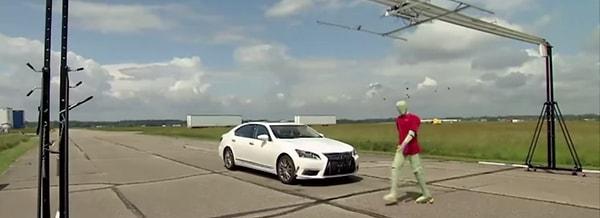Heat-Sensing Tech Could Fill Pedestrian Safety Gap In Auto Braking Systems
Through numerous trials, automatic braking systems have demonstrated a reasonable efficiency rate in preventing vehicle collisions all over the world. But what if it was combined with heat-sensing technology?

According to the Insurance Institute for Highway Safety, thousands of pedestrians are killed each year in the United States on highways and even on city streets. Automatic braking systems, or AEB for short, are designed to detect certain road obstacles, such as pedestrians, and halt the vehicle immediately if a collision appears likely and the driver has not taken any action.
The automatic braking system capabilities range from pre-charging braking systems to decelerating the vehicle to minimize damage. Some automated features fully take control of the vehicle and halt it before collision happens.

During the Pedestrian Safety Month, an Insurance institute for highway safety officer informs that several AEB systems on the street today are not really performing adequately when pedestrians are most susceptible, though one tech company appears to believe it has an answer.
“We have seen a lot of progress in systems that help detect pedestrians and other cars during the day, but unfortunately about three-quarters of yearly fatalities occur at night. Systems aren't performing as well at night,” David Aylor, Vice President of Active Safety Testing at IIHS said.
However, one specific technology known as heat sensing is proving to be an effective addition to the existing automatic braking system. Heat sensing refers to a vehicle's ability to detect thermal energy, similar to how thermal scopes are used in the military. When merged with current automatic braking system technology, it proved to be twice as effective, including cameras such as radar and RGB.

Since the human body also consists of heat, thermal sensors have no trouble capturing and identifying thermal energy from pedestrians, making them exceptionally efficient. The heat sensors work perfectly well both during the day and at night. Though, they work best at night since the sensor will likely focus better on a singular target.
Furthermore, heat sensing is a passive technology, which means that it will not interfere with one another in congested areas.
Given thermal imaging's advanced abilities, automotive research company VSI Labs has also created an automated pedestrian detection system that utilizes both radar and thermal imaging camera data to identify and approximate the path length of a pedestrian in front of a test car. The VUT is set to completely stop whenever a pedestrian is within a specific range ahead of the vehicle, which it helps determine to be the automatic braking distance.
Keşfet ile ziyaret ettiğin tüm kategorileri tek akışta gör!


Send Comment